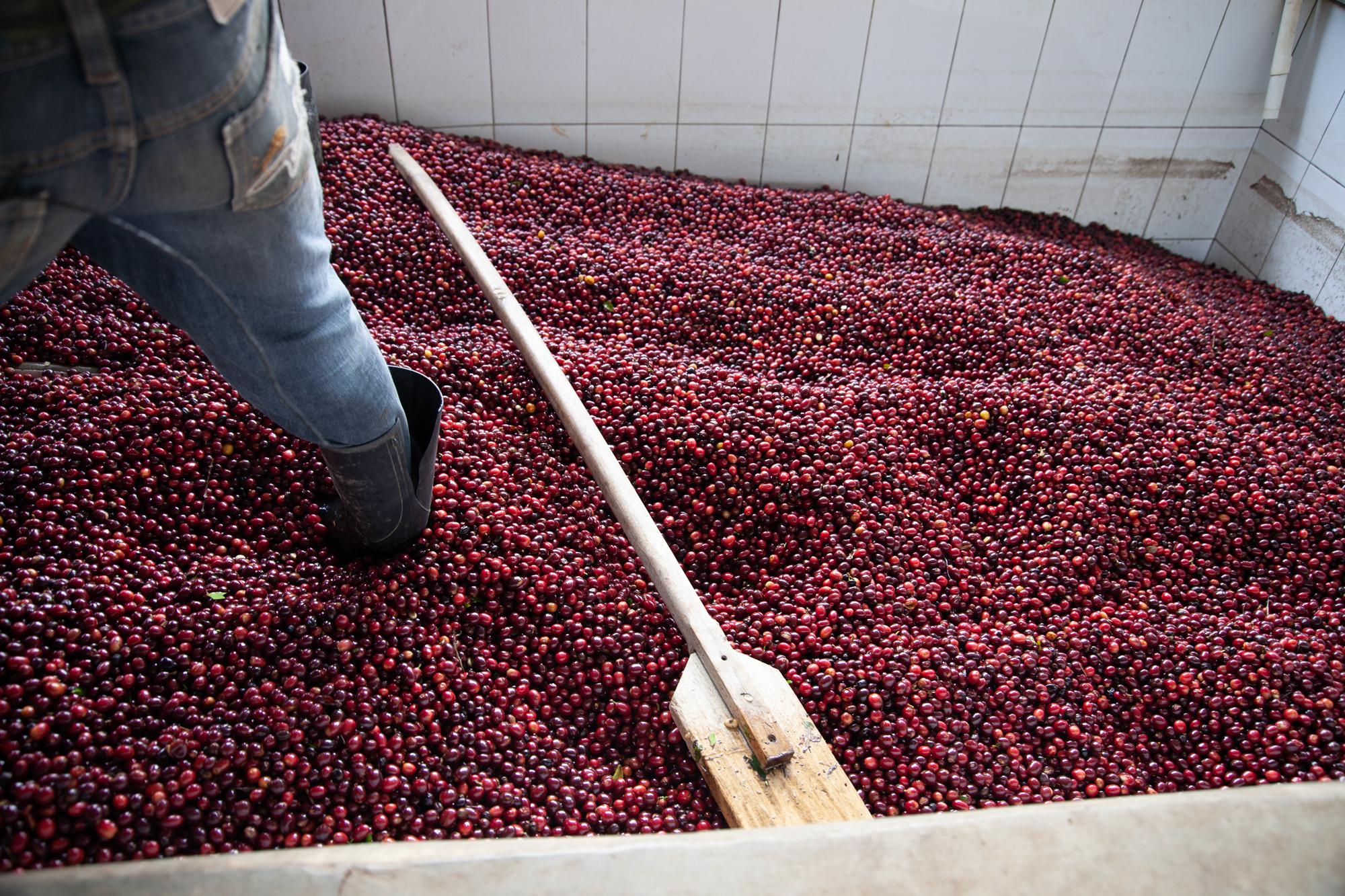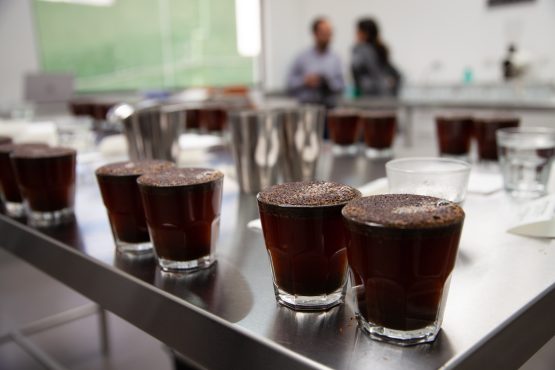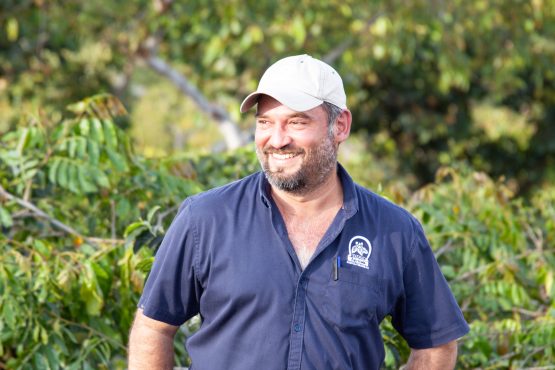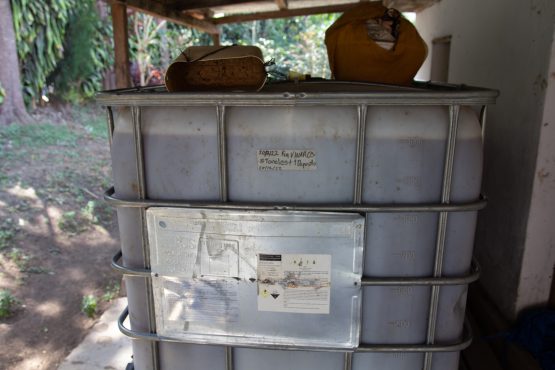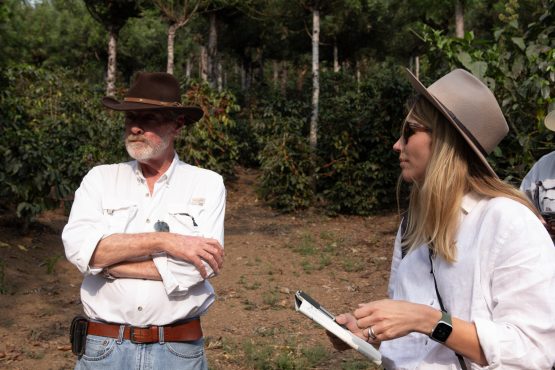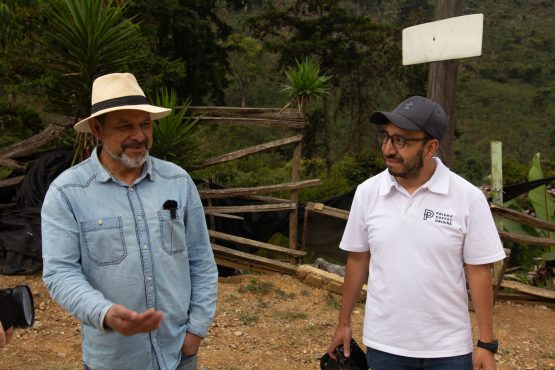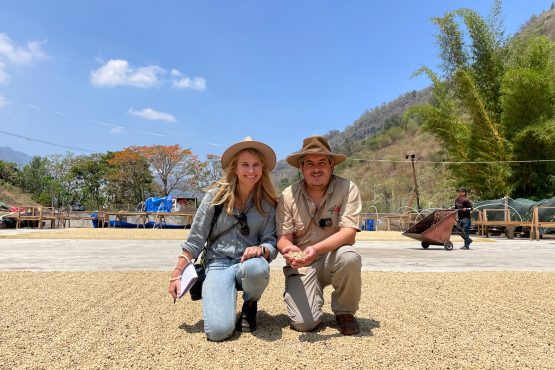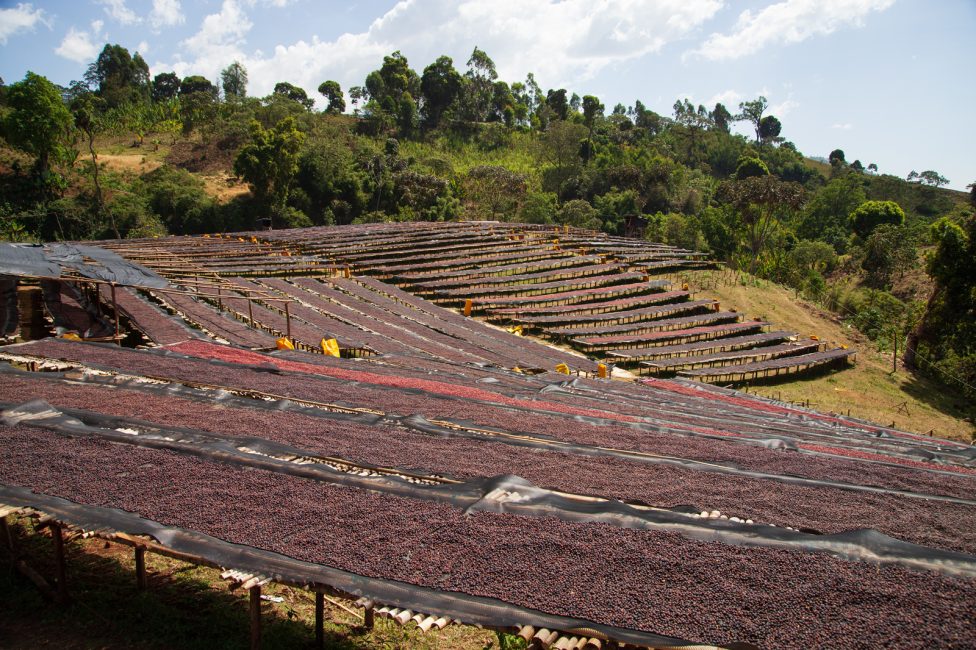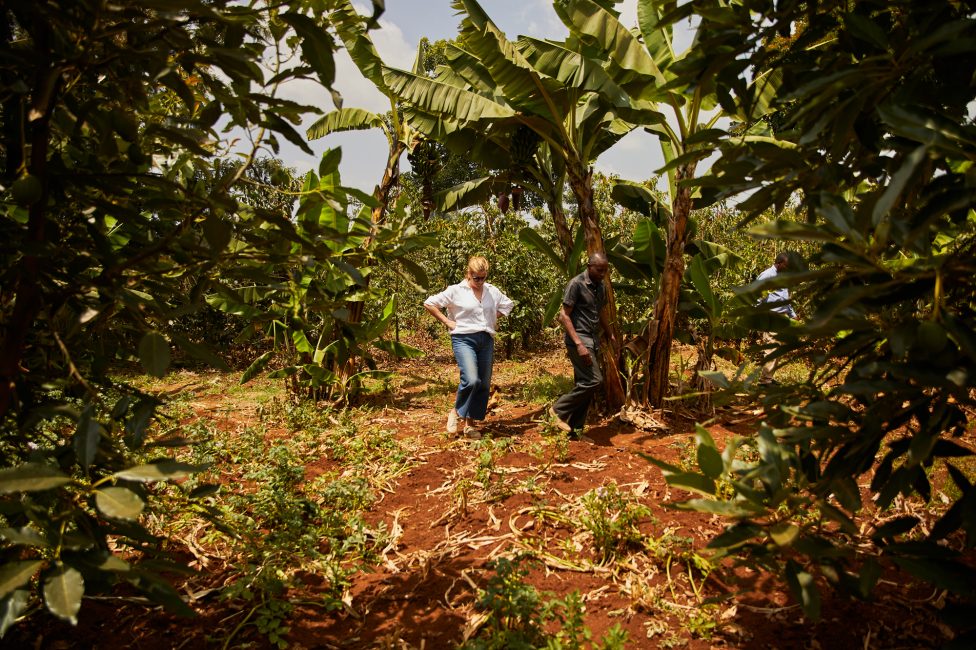Updates From The Road: Guatemala 2023
Published 25 Apr 2023
After a successful and rewarding trip to Guatemala in March this year, we’re excited to share some of what we learned on the road, and more information on what to expect from this year’s crop.
Coffee from Guatemala has been a staple of our coffee offerings since our very early days. Not only do we love the different flavour profiles produced here, but we also have built strong and longstanding relationships with a number of families for whom coffee is more than just a cash crop: it’s a family tradition and great source of pride. That’s why, after four years of not visiting, it was wonderful to be back on the ground, reconnecting with our special friends and spending time with them in person.
Our trip began in Guatemala City, with a full day of cupping with Prisma Coffee Origins in their brand new lab and head office. Prisma help connect us to some beautiful coffees in Guatemala including Calahute, La Maravilla and La Bugambilia. Starting off our trip cupping with Eduardo and his team gave us a great overall impression the season’s quality, as Prisma’s network of coffee-producing families and cooperatives are dispersed across the country’s growing regions.
Chatting with Eduardo, we also learnt a lot about some of the challenges facing producers this season. Not only have production costs skyrocketed over the last two years (the cost of fertiliser has increased threefold, for example), but volumes have also dipped due to huge labour shortages across the country.
As a result, many farmers (particularly larger estate owners) have been forced to leave perfectly ripe cherries hanging on trees or completely abandon sections of their farm. Every producer we met on the trip echoed this sentiment; most had 50-70% less pickers than they historically would employ during the peak of the harvest. For exporters like Eduardo, there are also challenges. The internal market for coffee has been fiercely competitive, run up by larger operators needing to fulfil contracts, as well as (reportedly) coffee being used by others for money laundering. Despite these challenges, the Prisma team had done a stellar job navigating a very competitive coffee market to secure incredible coffees from many of our favourite farms—and even found new producers for us to connect with as well!
The following day, after shortlisting our favourite coffees, we travelled north to Alta Verapaz, in Guatemala’s Cobán region, to spend time with Luis ‘Wicho’ Valdés of Santa Isabel. Here, we learnt just how busy Wicho had been since our last visit! In addition to being half way through a twenty-year renovation plan of the entire farm, Wicho explained that their approach to coffee production had shifted considerably. In an effort to combat the effects of climate change at the farm, Wicho is employing more organic and biodynamic farming practices to make his plantation more robust and sustainable. As he explained, “instead of investing more in medicine, we want to invest more in nutrition.”
In pursuit of this, Wicho has set up a lab at the farm, and has a full-time employee dedicated to harvesting microorganisms that, when used in a solution made with other organic compounds like cow manure and coffee cherry pulp, helps to make the coffee plants more naturally resistant to disease and insects. The results from this progressive approach have been incredible; Wicho no longer uses any pesticides on the farm and has already reduced his use of fungicides to more than half. The trees are also healthier and happier, and Wicho expects the quality to improve even more in the coming years. In the cupping lab Wicho’s coffees were tasting as spectacular as ever; we can’t wait to share them with you.
After Cobán, we drove back south to Antigua Guatemala, where the entire Zelaya family awaited us. Like every encounter on this trip, we were blown away by the warmth of their reception and filled with gratitude; whilst phone and video calls had kept us connected during the pandemic, nothing beats a big hug and long chat, especially with so many years to catch up on!
Like Wicho, the Zelayas have not stood still over the last 4 years. Ricardo has been steadily investing in Santa Clara, planting new varieties, upgrading their cupping lab and trialling a more efficient irrigation system, which is now being rolled out across the farm. Ricardo has also taken over the management of his Aunt’s estate, Hacienda Carmona. We fell in love with this coffee last year, and very excited to visit this farm for the first time. It is beautiful – and very big! The entire estate is around 700 hectares in size; around 500 of these are dedicated to natural forest, whilst 150 hectares are dedicated to coffee. Ricardo has already renovated 30 hectares of the coffee plantation and is slowly working across the rest to upgrade the more traditional practices used here.
During our stay in Antigua we spent some magical moments with Ana Lucia Zelaya (Ricardo’s sister) and her husband Rony Asensio on their beautiful farm, La Soledad. We cupped their coffee together and also selected a special lot from Rony’s other farm, Santa Ana de la Huerta which we are excited to be offering this year.
While in Antigua, Ricardo’s daughter Bel gave us an in-depth presentation of the work they’re doing through the Santa Clara Scholarship Program and their vision for its future, which includes increasing the number of students able to access the program and adding additional courses that build students’ skills with computers, resume-writing, public speaking and job interviewing. Bel is also keen to run women empowerment courses for their female students, with classes focused on financial literacy, entrepreneurship and health. As the year progresses, we are hoping to plan fundraising events to support this amazing initiative; please watch this space and reach out if you are keen to get involved!
We then left Antigua and embarked on the long journey to Huehuetenango, northwest of Guatemala City, where we had a very full day visiting two farms: Mauricio Rosales’ La Maravilla and Alfonso Anzueto’s Calahute. Both were in the thick of the harvest and their farms were abuzz with activities. While sacks full of ripe cherries were being delivered to their wet mills, Mauricio and Alfonso shared the challenges they were experiencing due to the ongoing labour shortages that have been felt most dramatically across HueHue. At La Maravilla, crop volumes are down by around 20% as Mauricio has been forced to strip-pick parts of his farm, because current staffing levels haven’t been able to keep up with the pace at which cherries are ripening; while at Calahute, upgrades to the irrigation system and expansions to the farm have been delayed as the high costs associated with maintaining his workforce have made these changes difficult to implement. As we heard Alfonso say, “All of us are always talking about the same thing these days—it’s really sad!”
Despite this, both Mauricio and Alfonso are continuing to focus their efforts on quality, and finding ways to increase the value of the coffee they are able to produce, recognising that this will be key to ensuring their businesses remain financially sustainable in the future. For this harvest, Mauricio is leaving his coffee on the trees for longer, and as a result it is riper and sweeter than in previous years. He is also trialing rare varieties like Gesha, SL28 and Batian on his farm, with the view to planting the ones that perform the best in terms of productivity and taste. Alfonso is in the midst of building his own dry mill and has also opened a cafe in the heart of Huehuetengo, where he is roasting and serving his coffee alongside some delicious cakes prepared by his wife, Juliana.
We finished our trip in Guatemala City, cupping for one last time in order to finalise our order. We said good bye to our Guatemalan coffee friends filled with gratitude for the incredible commitment and hard work they put into producing great coffee, even in the face of so many challenges.
We are so excited to share this season’s coffees with you! We’re currently in the final stages of confirming our offer list, which we’ll share with pre-shipment samples in May ahead of the coffees landing across June and July.
Read more about our Guatemalan sourcing here or get in touch anytime to plan your next Guatemalan offerings.
